Despite the introduction of AI in 2023 and the possible global economic downturn, there are still an unprecedented number of open positions in 2024. This has compelled employers to increase salaries and stay competitive. Failing to do so might result in employee dissatisfaction and the potential loss of top talent to more appealing offers.
As a result, companies must cautiously handle wage budgets. A smart yet fair compensation strategy enables the identification of deserving employees for salary increases — and the essence of such a strategy lies in salary assessments.
Navigating the salary assessment procedure might feel daunting, but fear not; this blog has you covered. In this article, we'll dive into what salary evaluations include, why they're important, and the influence they can have on organizational culture. Furthermore, we've included a PowerPoint presentation on efficiently executing a salary evaluation.
What is a Salary Review?
A salary review assesses whether an employee's wages accurately mirrors their job performance. These evaluations typically occur every six to twelve months, with managers adjusting salaries based on the outcomes of the assessment.
Effective salary reviews consider the following factors:
- Overall work performance
- Potential for growth
- Progress towards goals and achievements
- The role's significance in the job market
- Demand for the specific job role
The Importance of Salary Reviews
When executed effectively, salary assessments offer numerous advantages. Here's an overview of what you can anticipate:
- Clear timeline for salary increases — Uncertainty is not conducive to thriving. Regular salary reviews provide employees with a predictable schedule for potential raises, fostering understanding and emphasizing the importance of the topic within your company.
- Enhanced communication — Research indicates that individuals often lack awareness of how their pay compares to the job market; 57% of those paid at the market rate believed they were underpaid. Salary reviews allow managers to clarify the rationale behind the company's compensation strategy, addressing potential misunderstandings.
- Insights into the job market — Benchmarking is crucial for informed salary and hiring choices. The data gathered from your research can also unveil effective and ineffective practices among your competitors.
- Augmented trust between leadership and team members — Salary reviews convey to employees that their organization values and invests in them, fostering open discussions about pay issues with managers before they escalate to discontent, disengagement, and turnover.
- Identification of talent gaps — Salary reviews assist in evaluating candidates for promotion and uncovering areas where your business may be lacking, such as consistent failure to provide raises in a particular department.
- Increased motivation — Equitable compensation is integral to employee engagement and productivity, and salary reviews contribute to this. If your workforce is dissatisfied with your current compensation management, consider incorporating salary reviews into your employee engagement action plan.
How Salary Assessments Influence Company Culture
Compensation administration affects company culture, and salary evaluations play a crucial role in that regard. Successful salary reviews prompt honest conversations about remuneration and job performance, fostering increased sincerity and transparency between employees and leaders.
Salary assessments also serve as an admirable motivational instrument. Managers can utilize them to discuss about an employee's accomplishments leading to a salary boost or areas for improvement to attain one. When individuals are aware of the factors that yield positive outcomes, their productivity tends to increase.
How to Implement an Effective Salary Review
Making sure salary reviews go well means having a clear plan that smoothly fits into your big payment strategy. To help you with this, SlideTeam offers a helpful PowerPoint deck for salary reviews, making it easier to create a strong salary review process.
Let's go through each slide to see how to make an efficient and unified salary review framework.
1. Current Base Salary and Annual Hike Review Report
This slide displays a thorough table crafted for examining employee salaries, monitoring, and assessing the total expenditure on personnel within the company. The table includes vital information like employee names, departments, job titles, locations, and the corresponding percentage increase in salaries.
This organized overview permits a methodical examination of the financial commitment to the workforce, facilitating well-informed decision-making. Integrating these crucial metrics, businesses can acquire insights into salary allocation, recognize patterns across various departments and locations, and evaluate the influence of salary percentage hikes on the overall budget. The clarity offered by this table supports strategic planning for the workforce and guarantees a clear comprehension of the company's spending related to employee remuneration.
Download this PowerPoint Template Now!
2. Basic Employee Salary Review with Industry Trends
This slide shows a comparative assessment of employees' current basic wages concerning industry-wide patterns and counterparts within the same business sector. The departments involved in this analysis extend from operations and human resources to research & development and information technology.
This comparative analysis provides valuable insights into how employee salaries correlate with prevailing industry standards and the compensation benchmarks established by similar companies. Examining basic pay across diverse departments, organizations can identify trends, evaluate competitiveness, and make strategic decisions to ensure their compensation frameworks remain harmonized with industry norms and the practices of peer companies.
Download this PowerPoint Template Now!
3. Employee Salary Review Dashboard with Non-Salary Benefits
This slide presents a thorough overview of the company's complete employee compensation budget, providing a detailed breakdown of wages and showcasing the average salary growth over the years. Additionally, it shares details about non-wage perks, including a condensed workweek, paternal leave, lunch vouchers, and access to a corporate chauffeur.
This standpoint allows stakeholders to understand how complex the compensation framework is, seize the historical trends in wage increments, and recognize the all-inclusive nature of non-monetary advantages. Containing both financial and non-financial elements, the slide promotes openness and an all-encompassing comprehension of the company's dedication to employee well-being and happiness.
Download this PowerPoint Template Now!
4. Average Salary Review to Analyze Employee Bonus and Overtime Share
This slide showcases a central point for the salary review process, supporting the company in evaluating future compensation needs. It covers vital aspects such as pay distribution and breakdown, offering an in-depth understanding of the company's reward structure. Highlighting these essential components, the slide facilitates a thorough examination of the organization's present salary scenario and aids in strategic planning for upcoming compensation requirements.
The incorporation of pay distribution enables insight into how salaries are distributed among different levels, promoting transparency. Furthermore, the breakdown provides a detailed view of the diverse elements contributing to the overall compensation package. This slide plays a key role in guiding well-informed decisions and ensuring alignment with the company's evolving compensation strategy.
Download this PowerPoint Template Now!
5. Salary Review Dashboard with Hourly Rate
This slide showcases a dynamic dashboard for salary evaluation, assisting the company in understanding wage levels across various countries. It includes essential details such as hourly wages, levels of experience, and country-specific compensation metrics.
Through a detailed breakdown, the dashboard facilitates an in-depth analysis of how wages differ based on geographical locations and experience levels. The incorporation of hourly rates allows for a nuanced examination of time-bound compensation. This dashboard proves invaluable for globally operating companies, offering practical insights into compensation structures by country and supporting the development of fair and competitive wage policies across diverse regions.
Download this PowerPoint Template Now!
6. Salary Review Report with Number of Employees Per Department
This slide showcases a perceptive template of Key Performance Indicators (KPIs) specifically tailored for the comprehensive assessment of employee salaries and compensation across various departments within the organization. The sectors covered include vital segments such as leadership, account services, creative, production, HR facilities, and IT, among others.
Integrating these KPIs, the slide facilitates a strategic examination of compensation metrics, empowering stakeholders to measure the efficiency of salary structures in each department. This all-encompassing approach ensures a deep comprehension of the organization's compensation landscape, fostering decisions driven by data. The incorporation of diverse segments allows for a fine analysis, guiding the organization in refining compensation strategies to align with the unique needs and performance benchmarks of individual departments.
Download this PowerPoint Template Now!
Conclusion
Implementing salary reviews involves analyzing your company, your competitors, and each employee — then creating a strategy and scaling it for hundreds (maybe thousands) of employees. That’s all while keeping your plan fair, consistent, and transparent, so compensation management isn’t an easy task.
The comprehensive overview of salary review with our PowerPoint templates, including tables, dashboards, and KPI-driven reports, provides a holistic approach to analyzing and optimizing employee compensation. From examining salary distribution to considering non-monetary benefits, these templates offer valuable insights for strategic decision-making.
Improve your salary review process with our PowerPoint deck. This deck is exclusively available for our subscribers. So don’t miss out and subscribe today, starting at $49.99 a month or $249.99 yearly for unlimited downloads from the world's largest collection of professionally crafted templates. Elevate your compensation management strategy and ensure a transparent, fair, and consistent approach to salary reviews.



Frequently Asked Questions
Q: Why are salary reviews crucial for companies?
Salary reviews are crucial for companies as they help in ensuring fair compensation, retaining top talent, and fostering transparency in the organization. They provide insights into market trends, identify potential flight risks, and contribute to employee satisfaction and motivation.
Q: How often should salary reviews be conducted?
Salary reviews are typically conducted every six to twelve months. This regularity allows companies to stay updated on market conditions, address employee concerns promptly, and maintain a proactive approach to compensation management.
Q: What elements should be considered in an effective salary review?
An effective salary review should consider various factors, including overall work performance, growth potential, progress toward goals, the role's significance in the job market, and demand for the specific job role. These elements ensure a comprehensive evaluation leading to fair and informed compensation decisions.





 Customer Reviews
Customer Reviews


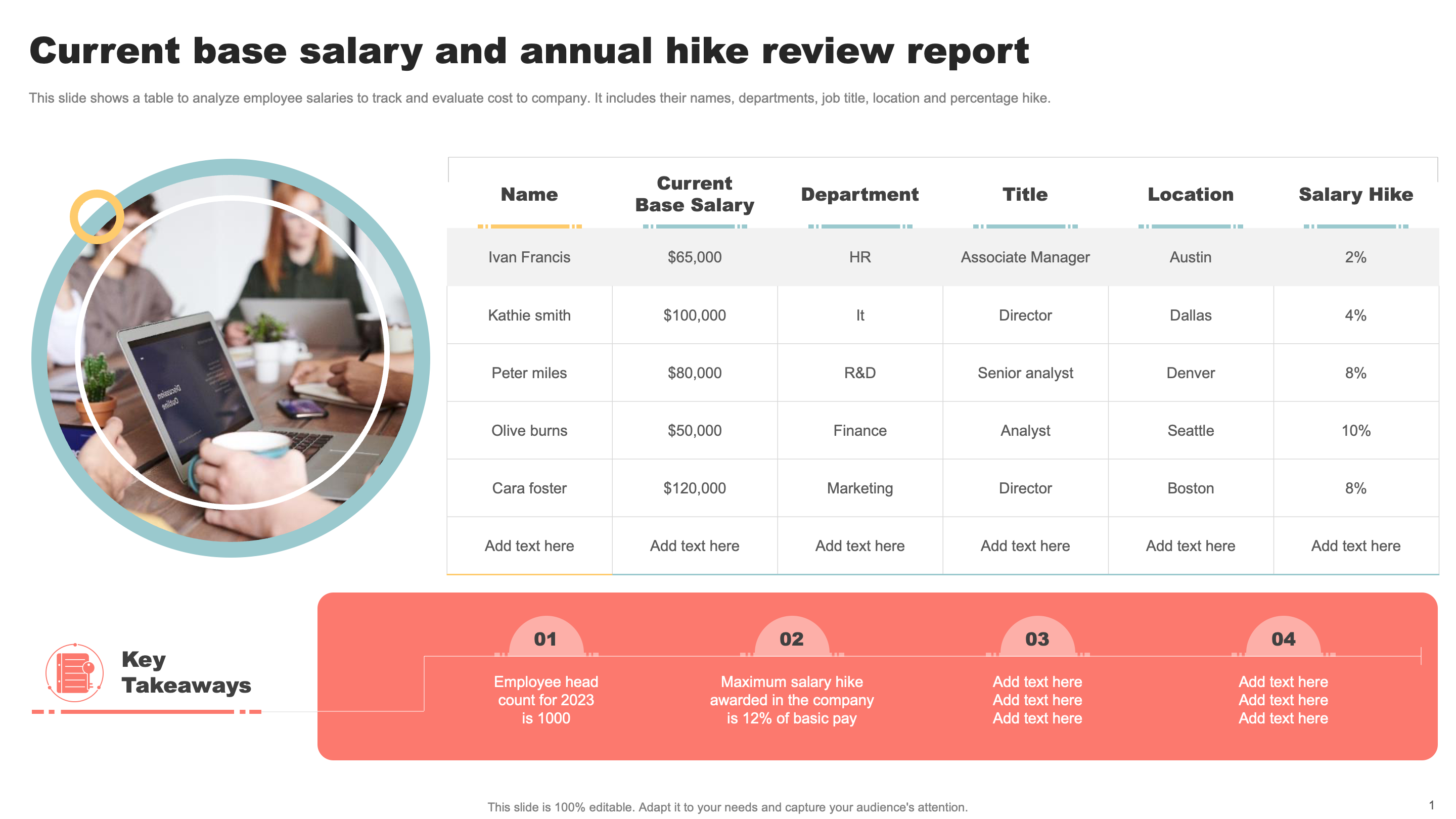
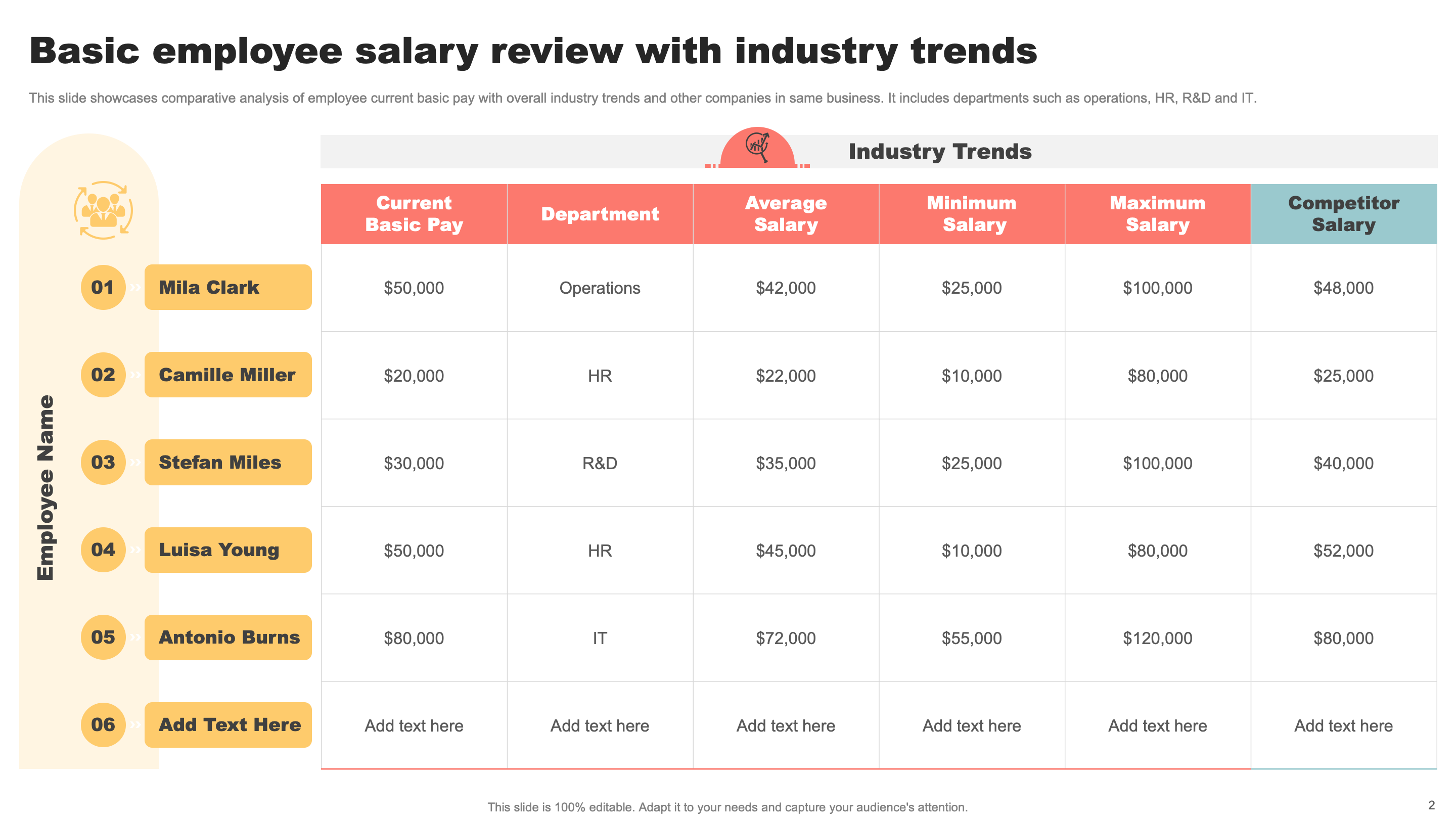
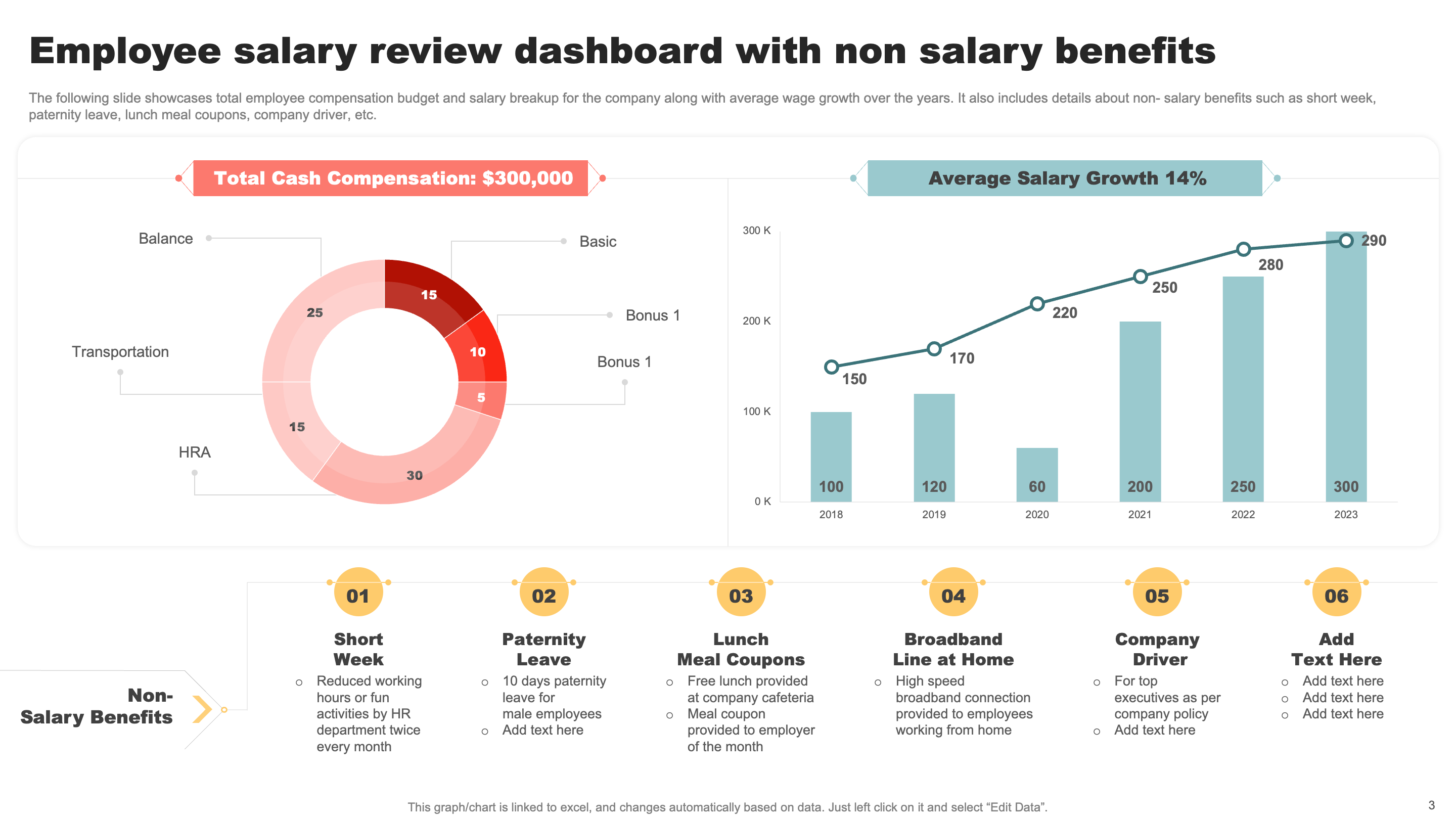
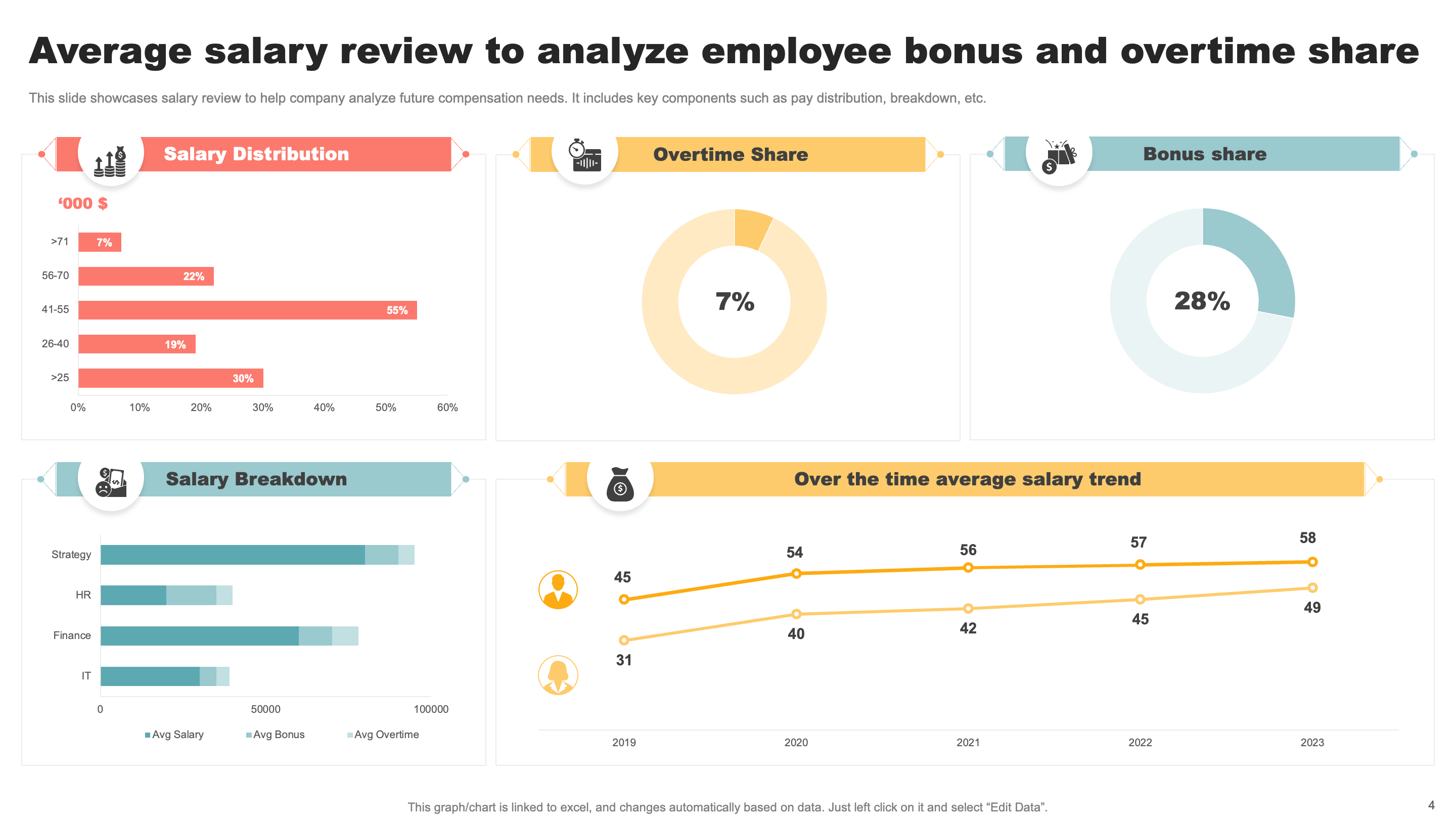
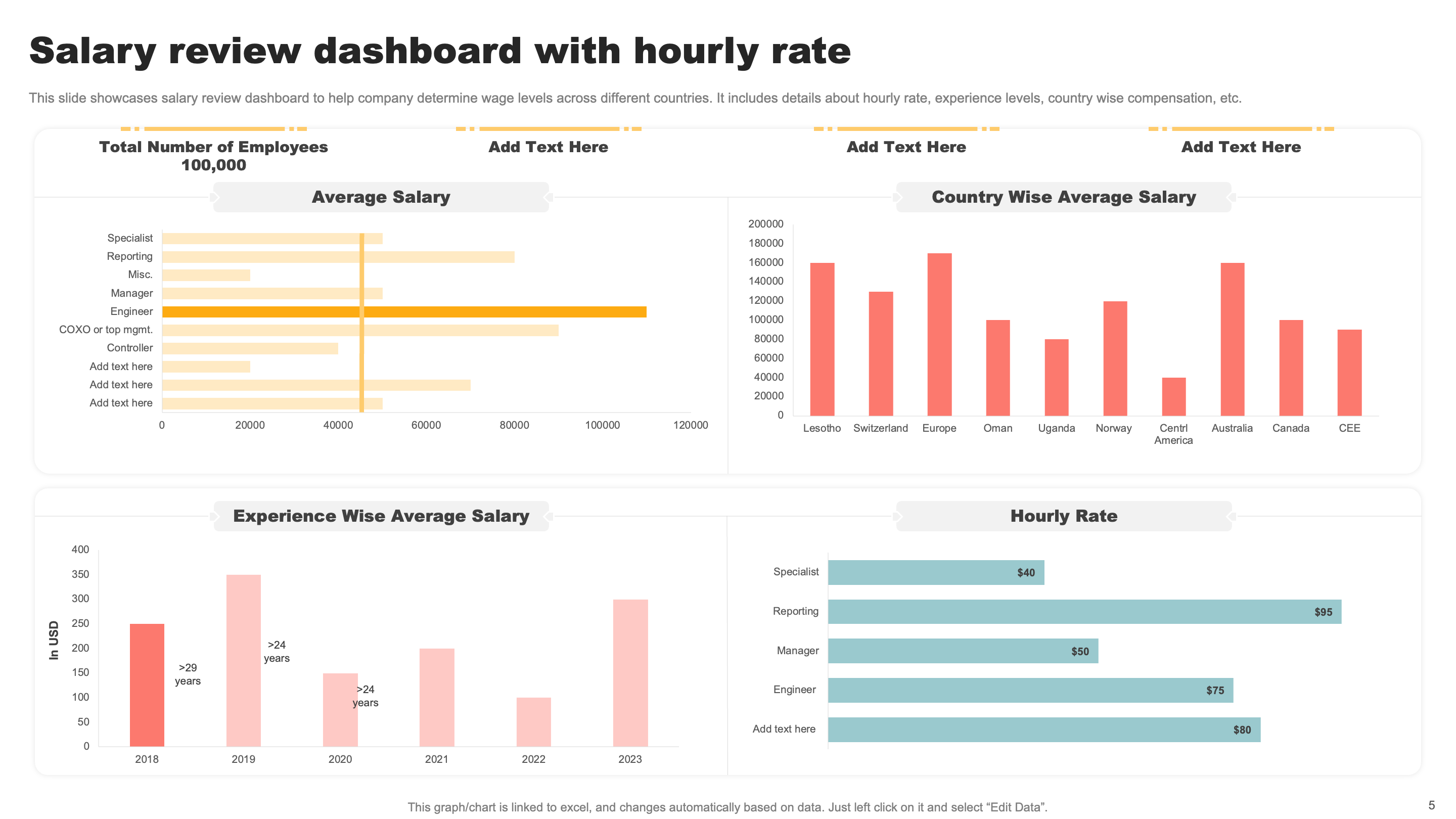
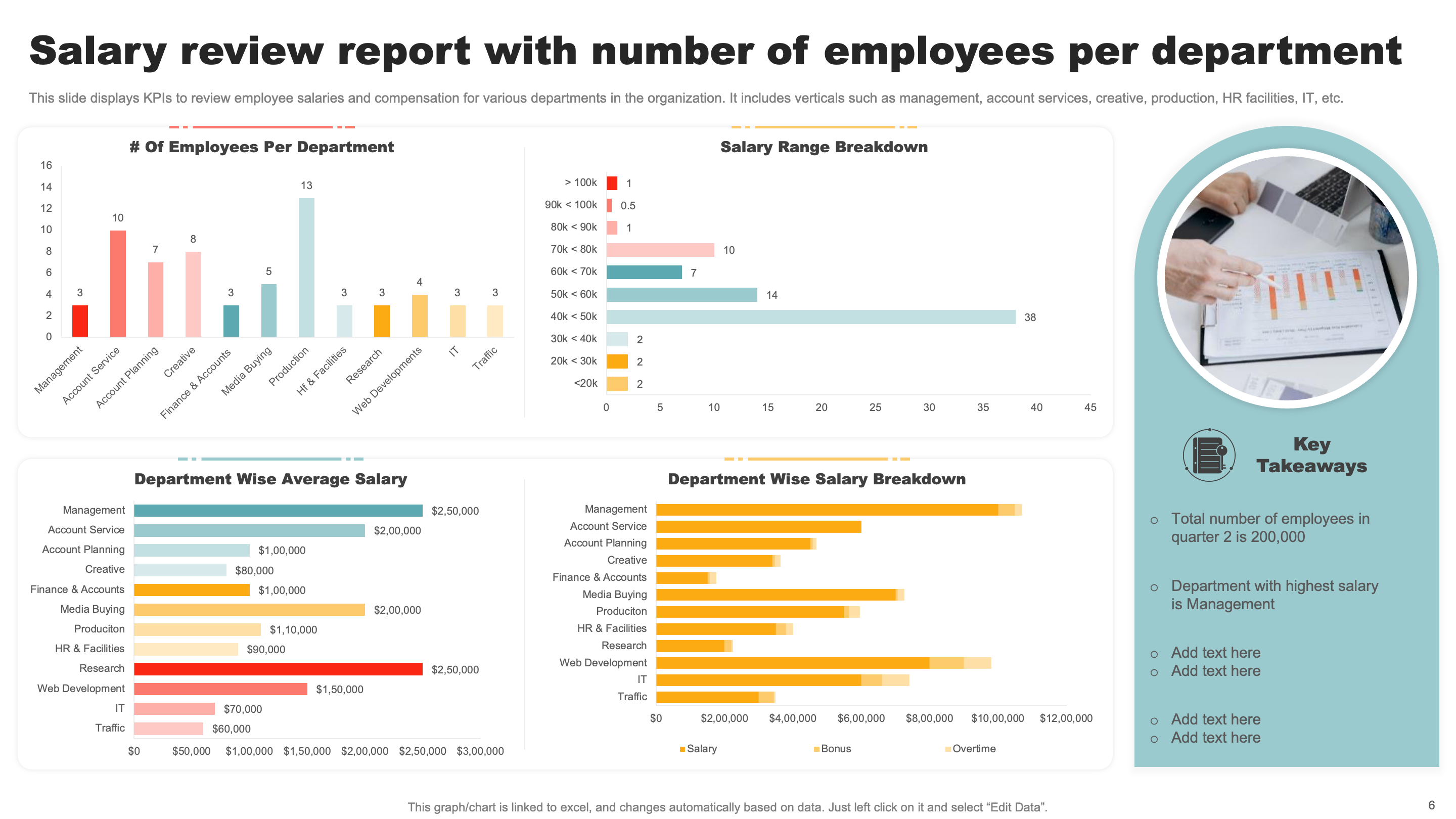



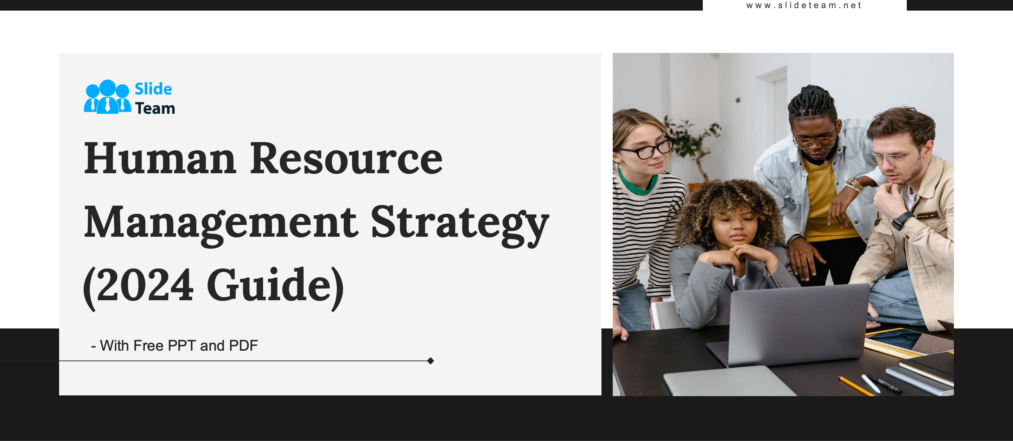
![Top 10 Financial Reporting Templates [Free PPT & PDF]](https://www.slideteam.net/wp/wp-content/uploads/2024/02/Banner-2-1013x439.png)











